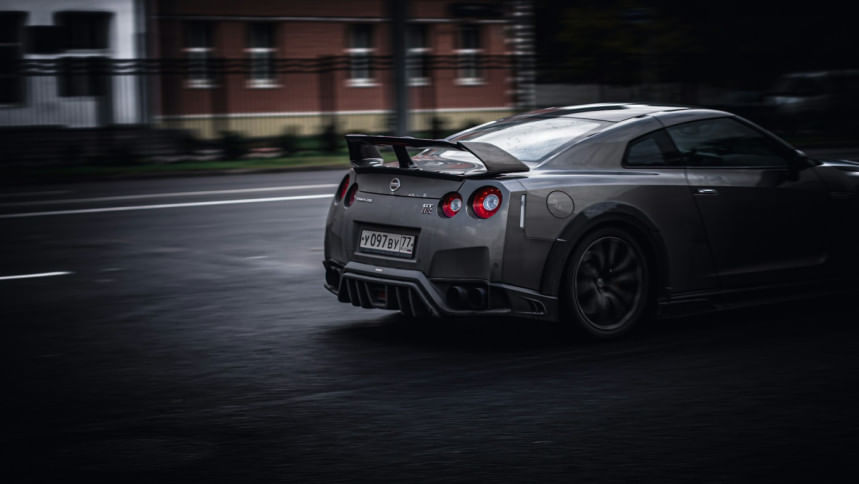Godzilla’s final bow: Saying goodbye to Nissan’s R35 GT-R

After almost 20 years of melting faces and destroying egos at the track, the Nissan R35 GT-R finally reached the end of its journey on August 26, 2025. That last one, a Premium T-Spec in Midnight Purple, rolled away from the Tochigi factory in Japan, and just like that, a Godzilla took its final bow.
The supercar that punched up
Back in 2007, the R35 didn't really play by anybody else's rules. It crashed into the supercar scene at about USD 70,000 when most of its contemporaries were charging double, sometimes triple the amount. And it was no slouch, hitting 62 mph or 100 kmph in sub three seconds thanks to that 3.8-litre twin-turbo V6 hand-built by Nissan's Takumi – a Japanese term used to describe master craftsmen who have perfected their skills over years of painstaking work and dedication.
However, the GT-R was not just quick in a straight line; it could also compete with, and often outperform, the likes of Porsche and Ferrari on the track.
The glowing reviews came pouring in from enthusiasts and critics alike, as well as from top automotive publications like Motorsport Magazine, Evo, MotorTrend, and Motor1. As Jeremy Clarkson in his Top Gear review put it, "They haven't built a new car here, they've built a new yardstick."
Since its inception, the R35 has participated in several endurance and cup series and has won many races, including the famous Bathurst 12 Hour and 24 Hours of Spa.
Innovation in its DNA
The truly astonishing part is that it was not just about being fast. Just at that budget, the R35 boasted cutting-edge innovations like its fancy all-wheel drive system (ATTESA, for us car nerds), a wild dual-clutch gearbox, and even a dashboard cooked up with the folks from Gran Turismo. It was a tech-head's fever dream. Not the prettiest with its wedge-shaped panels, and definitely not light like its legendary predecessors, the R35 carved up its own unique identity with dual personalities: one as your daily driver with minimal compromises, and the other as a savage track weapon which can demolish circuits and drag strips effortlessly, earning it the Godzilla moniker.
Always evolving on the core formula
Most cars get replaced every few years, but not the GT-R. Nissan just kept tweaking, tuning, and cranking up the power, which started at a mammoth 480 horsepower (hp) at launch and over 600 in those tantalising Nismo and T-Spec versions.
The R35 was clearly a winning formula for Nissan, so they kept selling it on the same basic formula with minor suspension tweaks, small bumps in horsepower and torque, and trivial facelifts improving the car iteratively. GT-R diehards loved the pertinacious approach to the updates, but many echoed not-so-positive sentiments, saying it got old, especially when the price tag ballooned well past the USD 100,000 mark.
But even with the advent of hybrids and EVs, the GT-R stood its ground as an old-school, loud, and proud driving machine.
The final lap
So, what exactly killed the R35? Perhaps people stopped caring enough to invest in something they may consider an almost two-decade-old relic. The numbers do back this up, showing sales figures plummeting since 2018. But the real kicker had to be modern regulations, which require compliance with noise levels, fuel economy, and emissions. Europe axed it early. Australia and New Zealand followed. By 2024, only Japan and the United States were left hanging on.
Nissan finally pulled the plug, first in the US, with two special editions (Takumi and Skyline), and then in Japan. The last orders closed in February 2025.
The R35 was not just a machine; it was a cultural phenomenon. Gamers dreamed of it in Gran Turismo and Forza. Fast & Furious made it a movie star. Tuners turned it into a 1,000+ hp monster, just for fun, and the reliable VR38 V6 motor could handle it with ease.
The GT-R proved Japan could build something that could hang with, and on occasion, embarrass the best from Germany and Italy, but without the snooty price tag. People didn't just buy a car; they bought bragging rights, and that too on a bargain. Even without sleek bodylines and a premium badge, it became the poster car for many aspiring enthusiasts. In a sense, it democratised power and made sports car performance more accessible to the regular petrolhead.
What's next?
Nissan says it is not ditching the GT-R name. Word is that the R36 is coming. Details are unknown, but rumours are that it could be an all-electric beast taking inspiration from the Nissan Hyper Force concept or maybe a hybrid with a smaller turbo V6 and electric boost.
Either way, it will be different. Maybe without the ethos of the old-school Godzilla, but if history's any guide, it may still take the competition by surprise.
However, the future of the R36 is not guaranteed, as Nissan itself is in a very shaky position, facing possible bankruptcy if it cannot turn things around soon. But to revive any brand, there is no better catalyst for success than to give the people a halo car worth admiring.
Bidding goodbye
The R35 was far from being perfect. Heavy? Sure. Some folks also said it did not have the soul of a classic sports car, and eventually, it was priced out of reach for most buyers. But being perfect was never the point. The GT-R was about the audacity to challenge the establishment, to outlast the trends for two decades, and to prove Japan could play at the very top.
Its departure now leaves a void that keeps growing after the discontinuation of other fan favourites like the Audi R8 and Dodge Viper, but the R35 GT-R will remain a cornerstone of car culture, still lingering in the collections of longtime fans, tuned to over thousands of horsepowers, participating and winning in SuperGT and other GT3 categories, remaining in motorsport games and movies, and continuing to put smiles on countless enthusiasts' faces.
For now, the Godzilla rests, but its legend will be immortalised as that of David who took on the European Goliaths and set a new benchmark for what is truly possible on four wheels.

 For all latest news, follow The Daily Star's Google News channel.
For all latest news, follow The Daily Star's Google News channel. 








Comments